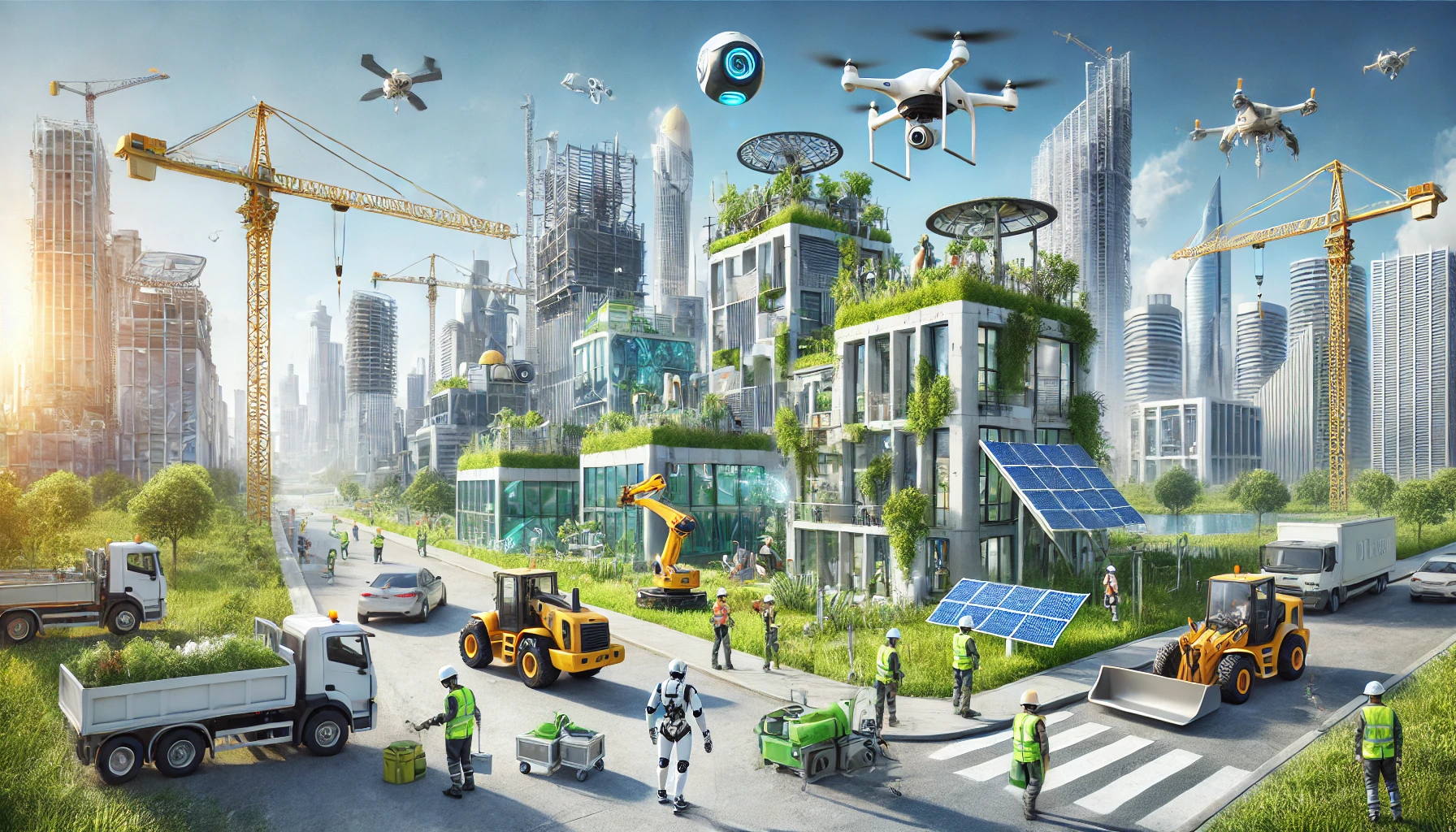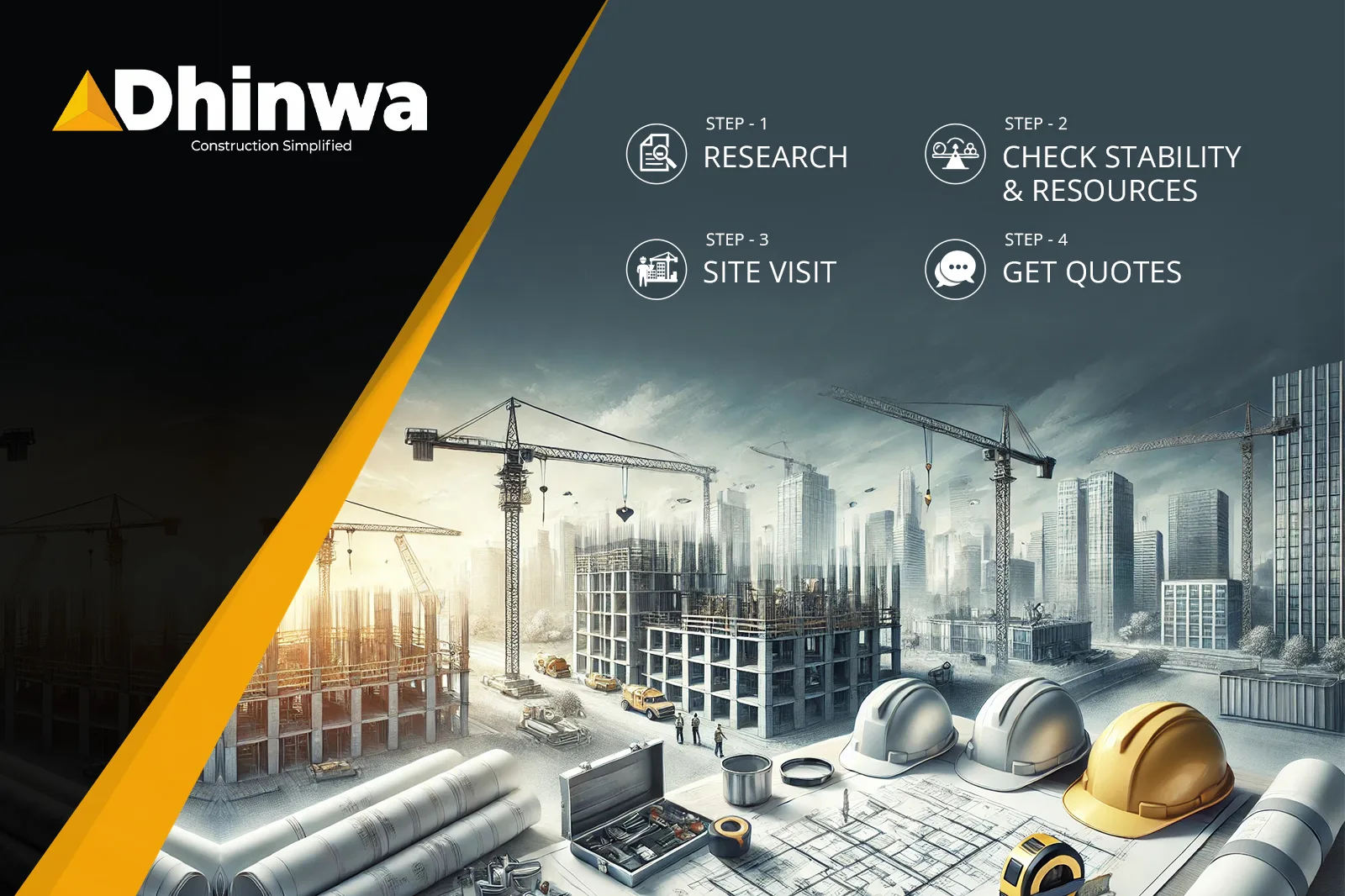A Detailed Guide On 17 Different Types Of Buildings

Table of Contents
Ever looked around, paused for a minute, and gave a look to the variety of buildings that surround us? If not, try doing it sometime as it will make you realize how each one of them has a fascinating story to tell that just makes you more and more interested in knowing about them.
Buildings come in all shapes and sizes, serving different purposes and accommodating various needs. From humongous skyscrapers to tiny one-room houses, each type of building has its unique characteristics and features. Understanding the different types of buildings can help one appreciate the diversity of architectural styles and construction techniques used around the world.
Three Major Types Of Buildings Based On Their Usage
Buildings can be categorized into three main types based on their usage: residential, commercial, and industrial. Each type of building serves a different purpose and has unique features.
1. Residential Buildings
Residential buildings are designed for people to live in. They can be single-family homes or residential apartments. The building in the image above is J Park by Aashish Group and if you are looking for flats in Jaipur then you should definitely check it out once. These buildings are typically built with comfort and privacy in mind. They often feature amenities such as kitchens, bathrooms, and living areas. Residential buildings can be made of a variety of materials, including wood, brick, steel, and concrete. At Dhinwa Construction & Engineering, we specialize in constructing high-rise residential buildings and our past projects are a testament to our expertise in the construction industry.
2. Commercial Buildings
Commercial buildings are designed for businesses to operate in. They can be office buildings, retail stores, or restaurants. These buildings are typically built with functionality and accessibility in mind. They often feature large open spaces, multiple floors, and parking areas. Commercial buildings can be made of a variety of materials, including steel, glass, and concrete. Over the years, we have worked on the construction of a number of commercial buildings and thus when it comes to building them, we are among the very few who can actually construct and deliver a commercial building within your budget and stipulated time.
3. Industrial Buildings
Industrial buildings are designed for manufacturing and production. They can be factories, warehouses, or distribution centers. These buildings are typically built with durability and efficiency in mind. They often feature large open spaces, high ceilings, and loading docks. Industrial buildings can be made of a variety of materials, including steel, concrete, and corrugated metal. If you are looking for a construction contractor with expertise in building factories, you should definitely get in touch with our team of experts.
Types of Buildings Based On Their Architectural Styles
When it comes to building design, there are several architectural styles that have emerged over the years. Each style has its unique features and characteristics that set it apart from the others. In this section, we will explore three of the most popular architectural styles: Traditional Architecture, Modern Architecture, and Postmodern Architecture.
1. Traditional Architecture

Image: Amber Palace in Jaipur, Rajasthan
Traditional architecture refers to the building styles that were prevalent before the 20th century. These buildings are characterized by their decorated designs, intricate details, and use of natural materials such as stone, wood, and clay. Traditional architecture is often associated with historical buildings, such as castles, cathedrals, and palaces. Indian temples such as Brihadeeswarar Temple, and Konark Sun Temple are excellent examples of traditional architecture.
2. Modern Architecture

Image: Hall of Nations, New Delhi (India)
Modern architecture emerged in the early 20th century and is characterized by its clean lines, simple forms, and use of new materials such as steel, concrete, and glass. Modern architects believed that buildings should be functional and practical, and they often used innovative construction techniques to achieve this goal. The Lotus Temple in Delhi is a great example of modern architecture.
3. Post-Modern Architecture
Postmodern architecture emerged in the late 20th century and is characterized by its extensive mix of styles, colors, and materials. Postmodern architects rejected the idea that buildings should be uniform and instead embraced the idea of creating buildings that were unique and individual. Postmodern architecture often incorporates elements from other architectural styles, such as classical columns, and combines them in unexpected ways. The Jawahar Kala Kendra in Jaipur and Cybertecture Egg building in Mumbai epitomize the post-modern architecture in India.
At Dhinwa Construction & Engineering, we merge the elements of modern and postmodern architecture in such a way that not only, our buildings bring on the modern-day touch but also, deliver it at a value that our clients love. Our past projects are great examples of that.
In conclusion, understanding the different architectural styles is essential for anyone interested in building design. By knowing the unique features and characteristics of each style, architects can create buildings that are not only functional but also aesthetically pleasing.
Different Types of Buildings Based On Construction Materials
1. Wooden Structures

Wooden structures have been used for centuries as a building material due to their availability and ease of use. Wood is a renewable resource and is widely used for residential construction. Wooden structures are popular in areas with a lot of trees and can be used for various purposes, including homes, barns, and sheds.
Wooden structures can be built using different types of wood, including pine, cedar, and oak. Pine is the most commonly used wood for building wooden structures due to its affordability and availability. Cedar and oak are more expensive but are more durable and resistant to rot and insect infestations.
2. Concrete Buildings
Image: Project Utpal’s structure getting built in Jaipur
Concrete is a popular building material due to its strength and durability. Concrete buildings can withstand harsh weather conditions and are resistant to fire and pests. They are commonly used for commercial and industrial buildings, including warehouses, factories, and office buildings.
Concrete buildings are constructed using steel-reinforced concrete, which consists of concrete and steel bars or mesh. The steel provides additional strength and support to the concrete. Also, reduces the possibility of having cracks in the building.
3. Steel Frame Buildings

Steel frame buildings are becoming increasingly popular due to their strength, durability, and flexibility. They are commonly used for commercial and industrial buildings, including warehouses, factories, and office buildings.
Steel frame buildings are constructed using steel beams and columns, which provide strength and support to the building. The steel frame is then covered with other materials, such as concrete, brick, or metal panels.
Overall, the choice of construction material depends on various factors, including cost, availability, durability, and intended use. Each material has its advantages and disadvantages, and it is important to consider these factors when choosing a construction material for a building.
At Dhinwa Construction & Engineering, we prefer to construct buildings that are not only pleasing to the eyes of anyone who sees them but also, on board a team of world-class engineers, architects, and other experts from various fields to ensure that the buildings that we build are full of strength to last all sorts of natural and unnatural phenomenon’s with minimal expenses on its maintenance.
Different Types of Buildings Based On Their Sizes
When it comes to different types of buildings, one of the most important factors to consider is the size. Buildings can range from small single-story structures to towering skyscrapers, and each size has its own unique characteristics and uses.
1. Low-Rise Buildings
Low-rise buildings are typically defined as those that are no more than three to four stories tall. These buildings are often used for residential or commercial purposes and are typically found in suburban or rural areas. Low-rise buildings are often constructed with wood or steel frames, and may feature brick or stone facades.
2. Mid-Rise Buildings
Mid-rise buildings are typically between five and ten stories tall, and are often used for commercial or residential purposes. These buildings may be constructed with steel or concrete frames, and may feature glass or metal facades. Mid-rise buildings are often found in urban areas, and may be used for apartments, offices, or retail spaces.
3. High-Rise Buildings
Image: Project Utpal’s 3D-Rendered Image
High-rise buildings are typically taller than ten stories, and are often used for commercial or residential purposes. These buildings may be constructed with steel or concrete frames, and may feature glass or metal facades. High-rise buildings are often found in densely populated urban areas, and may be used for apartments, offices, or hotels. Our construction projects like Utpal, Aamor, Govardhan Heights, J Park, are great examples of high-rise buildings at their finest. The types of foundations, and the types of materials that each one of our projects uses, is what makes them super durable.
Overall, the size of a building can have a significant impact on its use and function. Whether you are looking for a small residential building or a towering skyscraper, understanding the characteristics of each size can help you make an informed decision.
Some Special Types of Buildings
1. Educational Facilities
Educational facilities are buildings designed for teaching and learning. They can range from small schools to large universities. These buildings are equipped with classrooms, laboratories, libraries, and other facilities that are essential for education. Educational facilities are designed to provide a safe and conducive environment for learning. We provide our services for school building construction as well so In case if you are interested, let’s get in touch and see how we can help you create a sturdy and practical school building.
2. Healthcare Facilities

Healthcare facilities are buildings designed for the provision of healthcare services. They can range from small clinics to large hospitals. These buildings are equipped with examination rooms, operating rooms, laboratories, and other facilities that are essential for healthcare. Healthcare facilities are designed to provide a safe and hygienic environment for patients and healthcare providers. We are very well known as a respected hospital builder firm in the Jaipur region and beyond.
3. Green Buildings
Green buildings are designed to reduce the negative impact on the environment and promote sustainability. They are constructed using environmentally friendly materials and technologies that minimize energy consumption and waste production. Green buildings also incorporate features that improve indoor air quality, water efficiency, and overall occupant health and comfort.
4. Governmental Buildings
Government buildings are buildings designed for the provision of government services. They can range from small offices to large complexes. These buildings are equipped with offices, meeting rooms, and other facilities that are essential for government operations. Government buildings are designed to provide a secure and accessible environment for government officials and the public.
5. Hotel Buildings

As the name suggests, hotel buildings are those that provide a safe housing to run a hotel. It can be anything from low to a high-rise building in terms of its size with multiple floors, and steel as well as glass structure at different levels. We are specialist of building hotel building and we would love to get in touch with you to help you build a hotel that turns eyeballs no matter how many times has anyone seen it.
Overall, specialized buildings are designed to meet specific needs and requirements. They play an important role in society by providing essential services to the public.
We Follow Building Codes and Regulations to Maintain Highest Standards of Construction
Building codes and regulations are a set of guidelines that dictate the minimum standards for the construction, design, and safety of buildings. These codes are established by local, state, and federal authorities to ensure that buildings are safe, accessible, and energy-efficient.
One of the primary purposes of building codes is to protect the health and safety of the occupants of the building. For example, building codes require that buildings have proper ventilation, fire exits, and smoke detectors. They also require that buildings be designed to withstand certain environmental conditions such as earthquakes, hurricanes, and floods.
Building codes also help to ensure that buildings are accessible to people with disabilities. They require that buildings have features such as ramps, elevators, and wider doorways to accommodate people with mobility impairments.
In addition to safety and accessibility, building codes also promote energy efficiency. They require that buildings be designed to conserve energy and reduce greenhouse gas emissions. This includes requirements for insulation, efficient heating and cooling systems, and the use of renewable energy sources.
Overall, building codes and regulations play a crucial role in ensuring that buildings are safe, accessible, and sustainable. By adhering to these guidelines, we create buildings that are not only aesthetically pleasing but also functional and safe for all occupants.









